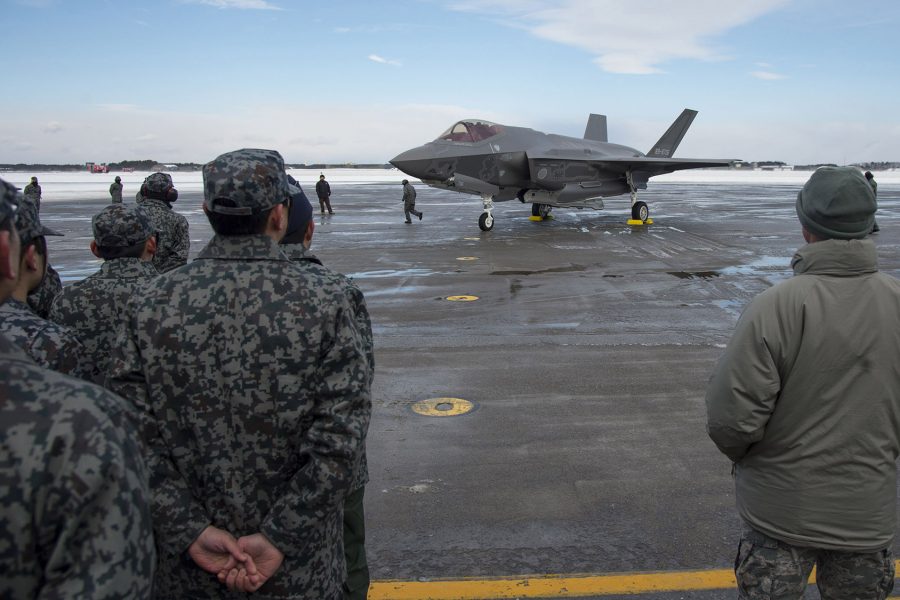The State Department on July 9 approved Japan’s request to buy 105 more F-35s, and it’s now up to Congress to approve the sale.
The purchase of additional jets, including 63 conventional takeoff and landing models and 42 short takeoff and landing models, would make Japan the second-largest F-35 operator.
The news comes the same week as Japan’s Defense Ministry informed the country’s legislative body it plans to move ahead with the F-X, a “sixth generation” fighter, to replace its F-16-based F-2s in the 2031 timeframe.
The sale of the F-35s would be worth $23.11 billion — the second-largest ever such sale in dollar value, according to the Defense Security Cooperation Agency. A 2010 sale of F-15s, associated weapons and other gear to Saudi Arabia was worth $29.4 billion.
Japan is already underway building a fleet of 42 F-35As, some of which it received from the U.S. and the rest of which it is assembling in its own Final Assembly and Check-Out facility at Nagoya. About a dozen of the type has been operational since March 2019. One of the first Japanese F-35As crashed a month later.
The 42 F-35Bs are expected to operate at least some of the time off Japan’s new Izumo-class flat-top destroyer, which will also operate a variant of the Air Force’s CV-22 Osprey tiltrotor.
With 147 F-35s of both types, Japan would be the largest operator of the Lightning II besides the U.S., eclipsing the United Kingdom’s planned total of 138. It would also become the third foreign operator of the F-35B variant used by the U.S. Marine Corps, the U.K., and Italy.
The sale includes 110 Pratt & Whitney F135 engines including five spares, simulators, software support, electronic warfare gear, and ferry and tanker support. It would not include weapons.
The State Department determined that the sale won’t affect the military balance of power in the western Pacific, as the jets are replacing Japan’s obsolete F-4s. The transaction enhances Japan’s “air to air and air to ground self-defense capability,” the State Department said, and bolsters the capability of a staunch U.S. ally.
In the Pacific region, South Korea also operates the F-35A. Seoul decided informally in October 2019 to add another 20 jets to its 2016 initial order, which would bring its planned acquisition to 60. That country is also reportedly considering that some of those jets would be F-35Bs.
Singapore, which is a developmental partner in the F-35 program, has asked to buy 12 F-35Bs. Australia’s plan is to ultimately operate 100 F-35As. All told, plans call for 319 F-35s to be procured by Pacific-region countries outside the U.S.
The F-X plan communicated to Japan’s legislature calls for a stealthy, twin-engined, twin-tailed fighter with a lambda wing that bears a strong resemblance to USAF’s F-22 Raptor. It would have internal weapons bays and use thrust-vectoring nozzles like the F-22. Japan was turned down from buying the F-22 more than 15 years ago, and since then has rebuffed a suggested production line restart using the F-22 airframe and avionics of the F-35.
Japan is in need of fifth-generation or better aircraft because neighbors China and Russia are fielding such platforms now. Japan’s F-15Js date back to the 1980s and its F-2s to the 1990s. The country’s F-4Js date back to the 1970s.

